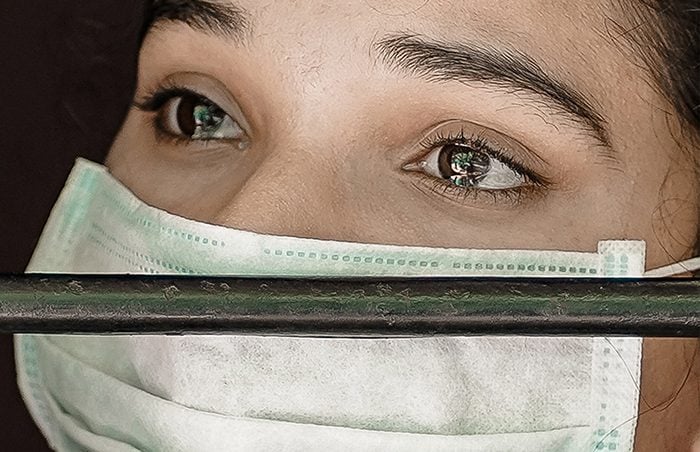Starting on July 24th, wearing a face mask is mandatory in the United Kingdom for anyone going inside a shop, supermarket, or riding on public transport.
There are similar rules and regulations in most countries across the world, with more being added every day.
The Mayo Clinic has reported that alongside regular hand-washing and social distancing, wearing face coverings will reduce the spread of the Covid-19 virus when they are widely used by people in public settings.
However, for many people wearing something covering your nose and mouth can trigger feelings of anxiety, panic, and claustrophobia. For someone who already has a history of panic or anxiety, the feelings and sensations experienced when wearing a mask can be heightened and trigger the fight, flight, or freeze response.
But there are steps that we can take to reduce the tension.
Five tips that can help reduce our anxiety:
1. Call it what it is.
Wearing a face mask during a global pandemic is anxiety-provoking, so if you already have heightened levels of anxiety, it’s perfectly understandable that you may be feeling more anxiety at the moment. Realizing that and accepting that as something just is will help you in allowing yourself to feel whatever comes up and to respond with a variety of action steps or coping skills.
2. Desensitize.
Familiarize yourself with your face mask. Get to know the texture, the material, the colour, and the smell. Spend a few minutes examining it and being mindful of the fact that wearing this is ultimately an act of compassion for yourself and others.
3. Practice.
Consider wearing your face mask at home for short periods until you become more comfortable with the feeling. Begin by just allowing yourself a few moments to familiarize yourself again with your face mask and then try wearing it for just a few minutes at a time. Be kind to yourself, know and learn your limits.
4. Take short trips.
Consider making two shortened trips into the supermarket or shop instead of one long trip if you feel this would help with your anxiety. The same thing goes with any public transport trips you may need to take. Maybe you can break the trip into more manageable chunks by experimenting with different routes.
5. Practice pursed-lip breathing.
This technique can be used to calm feelings of anxiety and stress, particularly when wearing a face mask. Firstly, try to relax your neck and shoulders; then with your lips lightly pursed, breathe in through your nose. Exhale slowly and intentionally through your pursed lips. The idea here is that your exhale (through pursed lips) is longer than your inhale. This breathing technique also activates the vagus nerve, which kickstarts our bodies’ natural rest and digest systems.
Face masks are going to be part of our attire for the foreseeable future so trying to make wearing them easier, less triggering, and less uncomfortable is a powerful and positive step forward.
Perhaps the realisation that we are indeed all in this together and are connecting to our common humanity may make the discomfort of wearing a face mask a less frightening experience in itself.
Stay safe.











Read 1 comment and reply